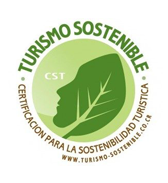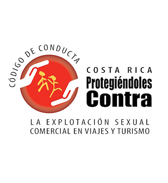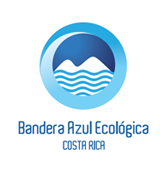The majesty of the forest, its impressive biological diversity, as well as its water wealth among other amazing aspects, impacted important scientists who fought to rescue and protect this piece of paradise on earth.
Its origins go back to the year 1968, six years after the founding of the Association “Centro Científico Tropical” when Dr. Leslie Holdridge and Dr. Joseph Tosi, visited the Monteverde area of Puntarenas in order to carry out part of a study of the Northern area of the country. In the company of the leader of the Quaker community established in the place, they explored through the primary forests that surrounded the town, reaching the surroundings of what is now the current entrance to the reserve.
Impressed by the majesty of the cloud forests of the site and their biological diversity, they recommended to the Quaker community that they should conserve all the forest possible, with the purpose of protecting their water resources. In addition, they recommended making a very prudent, non-commercial exploitation of the trees on the farms to meet the needs of the community in terms of firewood, poles and wood.
At the beginning of 1972 the ornithologist George Powell, a scientist residing in Monteverde, impressed by the extraordinary biological richness of the cloud forest—including the entire habitat of the endemic golden toad—and concerned about the depredation by hunters and land speculators got the promise of a gift of 328 hectares from the Guacimal Land Company, provided he could find a civic association with legal authority to receive the land donation. After the initiative was rejected by other organizations, Powell looked to the Centro Científico Tropical CCT (Tropical Science Center) as a non-profit Costa Rican association through which the donation could be received.
When this organization met all the requirements requested by the donor, it was decided to begin the procedures to receive the land; therefor, in April 1973, the first 328 hectares of what would be the Biological Monteverde Reserve were acquired at a cost of one colon (1). Powell then served on an ad honorem basis, as its first administrator and had the support of his wife and Quaker resident Wilford “Wolf” Guindon.
From the beginning, the objectives of the reserve, in order of priority, were: “To protect and preserve the existing ecological communities in the area of the continental divide to use in non-destructive biological research and for environmental education, both formal and informal, through the controlled visitation of the public “. Knowing that the size of the area was too small to defend even a representative sample of the ecological complex of the Cordillera de Tilarán, in 1973 the CCT began a campaign in the international arena to request funds that would allow the reserve to be enlarged, obtaining a total of US $15,930, with which additional land was purchased at an average price of nine (9) dollars per hectare.
In 1975, the World Wildlife Fund (WWF) approved US $80,000 to purchase land and cover administrative and surveillance expenses over the next three years. In the same year, a forest area of 554 hectares, owned by the Quaker community was added to the reserve for management and protection purposes, called Bosque Eterno SA, which was annexed to the Monteverde Reserve under a management contract for 90 years.
Also, it was in 1975 when the reserve began to receive visitors (mostly scientists and birdwatchers). At that time there were 471 visitors, and although this amount increased gradually year after year, the income generated by the right of admission, which consisted of charging ¢20.00 per person or US $2.34 (US $1.00: ¢ 8.54), was totally insufficient to cover operating expenses. In the absence of funds, the CCT invested its small surplus of its other projects in the expenses of the reserve, taking the administration on an ad honorem basis, from its offices in San José.
In 1977, the CCT leased a small house that operated as a pension for the new flow of visitors. By 1978, the CCT had already received a series of donations that allowed the acquisition of more than 1,100 hectares of land. It should be noted that in the selection of the lands to be purchased, preference was given to those that guaranteed a presence on both sides of the continental divide and on the road to Peñas Blancas, where they could, by their mere presence, exert an influence in curbing invasions to the then extensive national reserves (national fallow land) inland.
In this period, land was also purchased along the road to “Chomogos” and “El Valle”, managing to eliminate speculators of land in the area and permanently closing this path as a public road. Between the years 1975 and 1980 several important events happened, one of the most outstanding being the legal process that the CCT had to undertake for about 16 years against a group of locals who claimed property rights in the area of El Valle west of the Reserve, these lands were considered public domain and were also largely covered with virgin forest.
With the resolution of this process, it was not only possible to protect the forest, but also to prevent the construction of a road that would cross the reserve to reach the Peñas Blancas valley, which would then be used to extract timber and carry out livestock activities as well as increase the value of the land in that valley.
Despite this and because of the slowness of the judicial process, the settlers managed to build a trail that reached the Valley, passing through the place in the reserve called La Ventana and, despite the topography of the land and the difficult access, they managed to make small clearings, built small rustic dwellings and hunted animals of the local fauna.
However, the patrols organized by the protected area officials stopped a large part of this activity. Another important event for the Biological Reserve was the arrival in 1977 of a team of film photographers from the British Broadcasting Company (BBC London) who made a documentary about the reserve. This was broadcast in Europe in early 1978 and attracted the attention of Europeans and Americans, greatly increasing interest in the preservation of tropical rainforests, and led to the first visits to the area, especially bird watchers, which then gave Costa Rica popularity as an eco-tourist destination.
In 1978 the number of visitors to the reserve increased to almost 2,000 people. In this same period, different universities, especially in the United States, began the first research projects—mainly including the study, collection and documentation of plants and animals present in the reserve. Beginning in 1987, the Trust Fund for the Monteverde Reserve was established with the sole purpose of using the interests generated to pay the essential costs of surveillance and management. In subsequent years and until now, the CCT was dedicated to administering the reserve through protection actions, environmental education, scientific research and the attention of visitors.






